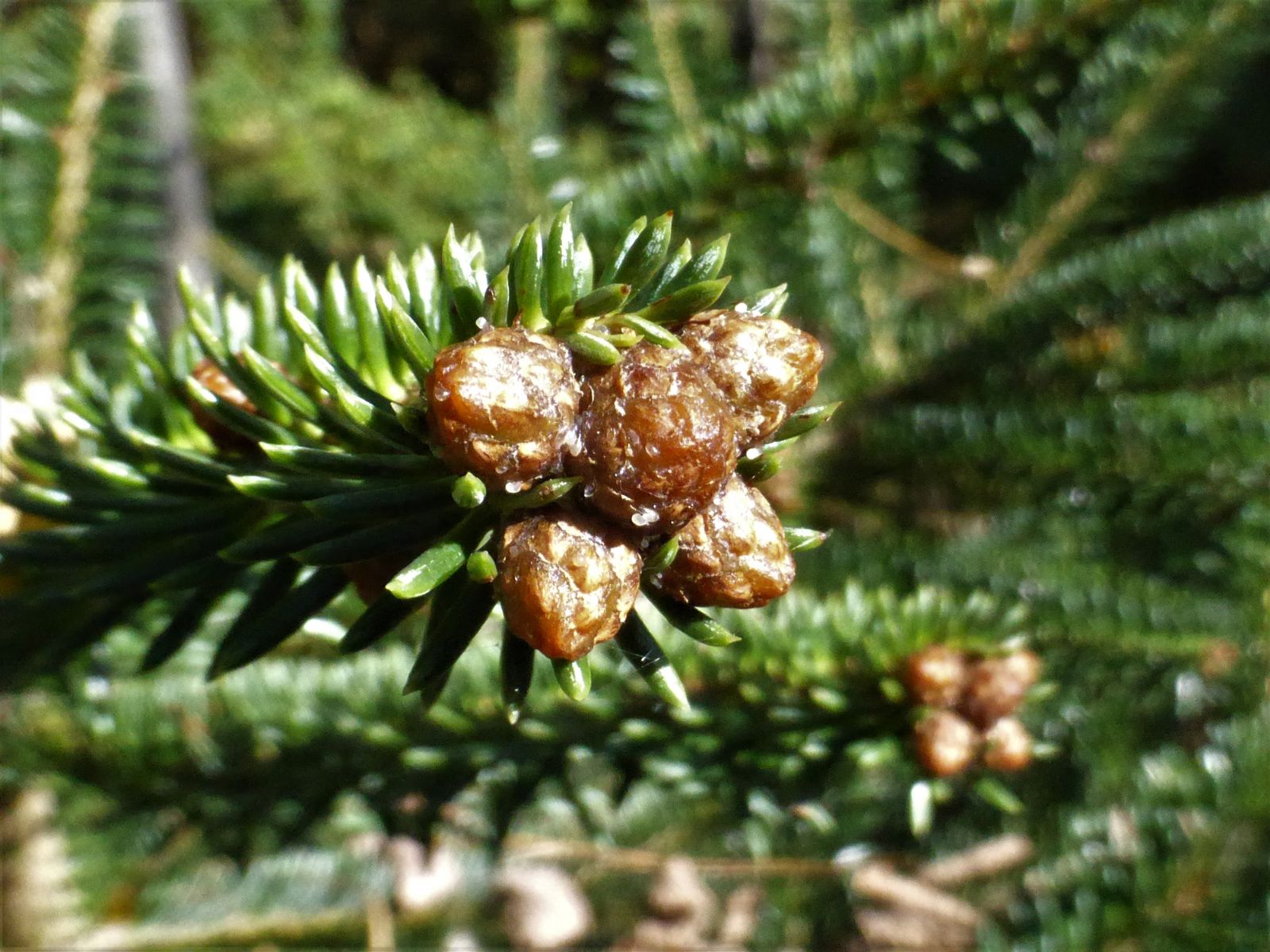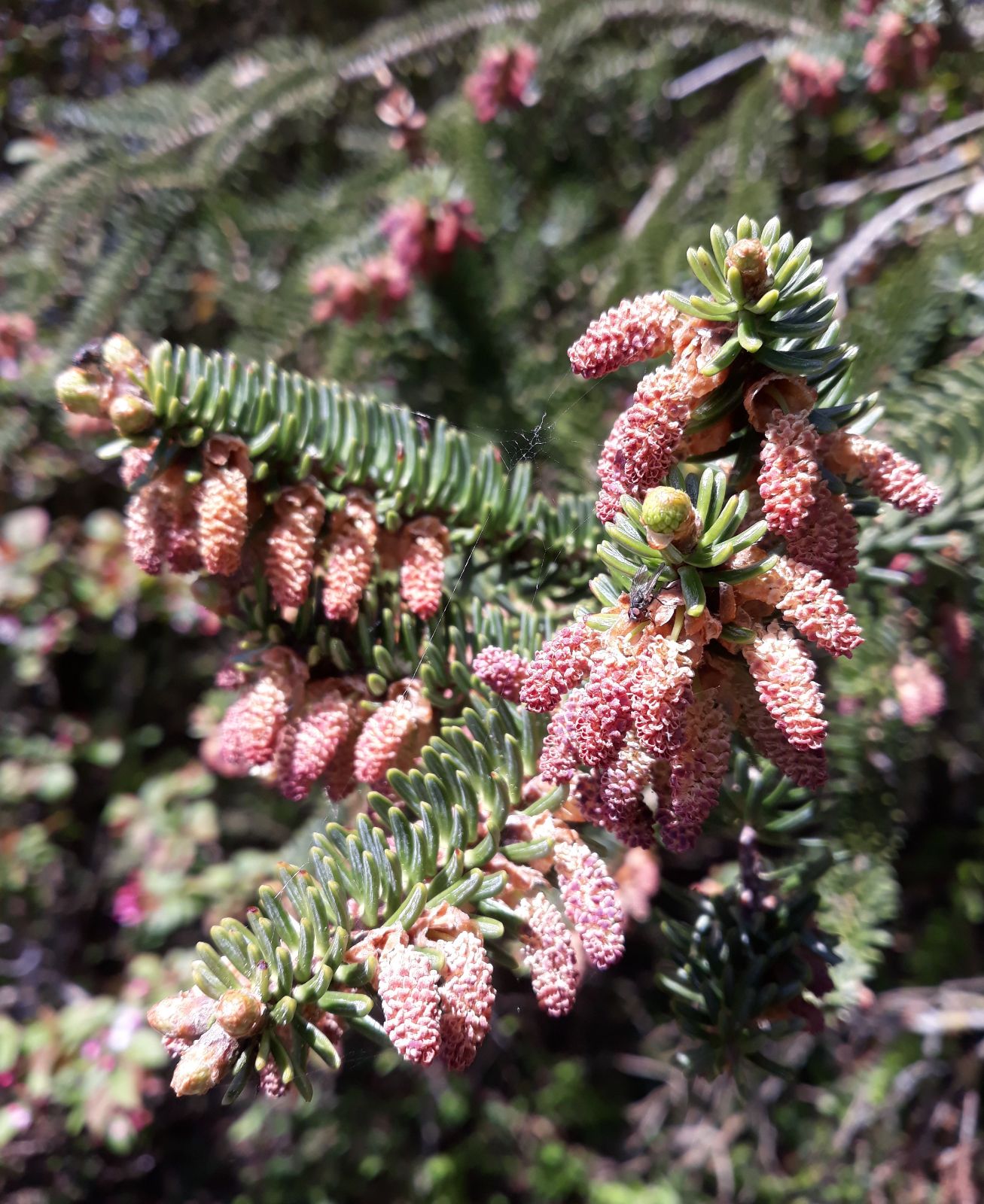Abies × vilmorinii
Sponsor
Kindly sponsored by
Sir Henry Angest
Credits
Tom Christian (2021)
Recommended citation
Christian, T. (2021), 'Abies × vilmorinii' from the website Trees and Shrubs Online (treesandshrubsonline.
Genus
- Abies
- A. cephalonica × A. pinsapo
Common Names
- Vilmorin Fir
Infraspecifics
Other taxa in genus
- Abies alba
- Abies amabilis
- Abies × arnoldiana
- Abies balsamea
- Abies beshanzuensis
- Abies borisii-regis
- Abies bracteata
- Abies cephalonica
- Abies × chengii
- Abies chensiensis
- Abies cilicica
- Abies colimensis
- Abies concolor
- Abies delavayi
- Abies densa
- Abies durangensis
- Abies ernestii
- Abies fabri
- Abies fanjingshanensis
- Abies fansipanensis
- Abies fargesii
- Abies ferreana
- Abies firma
- Abies flinckii
- Abies fordei
- Abies forrestii
- Abies forrestii agg. × homolepis
- Abies fraseri
- Abies gamblei
- Abies georgei
- Abies gracilis
- Abies grandis
- Abies guatemalensis
- Abies hickelii
- Abies holophylla
- Abies homolepis
- Abies in Mexico and Mesoamerica
- Abies in the Sino-Himalaya
- Abies × insignis
- Abies kawakamii
- Abies koreana
- Abies koreana Hybrids
- Abies lasiocarpa
- Abies magnifica
- Abies mariesii
- Abies nebrodensis
- Abies nephrolepis
- Abies nordmanniana
- Abies nukiangensis
- Abies numidica
- Abies pindrow
- Abies pinsapo
- Abies procera
- Abies recurvata
- Abies religiosa
- Abies sachalinensis
- Abies salouenensis
- Abies sibirica
- Abies spectabilis
- Abies squamata
- Abies × umbellata
- Abies veitchii
- Abies vejarii
- Abies yuanbaoshanensis
- Abies ziyuanensis
Tree to 30 m. Crown broad conical-pyramidal. Branches long, stout, spreading horizontally with age, maturing ash-grey. Branchlets shining purplish- or reddish-brown at first, later shining greyish-brown, smooth, glabrous. Vegetative buds ovate, thick, obtuse at apex, resinous. Leaves resembling those of A. pinsapo but longer, less stiff, and somewhat pectinately arranged, at least parted beneath the shoot by a ‘V’, 1.5–3 cm × 2–3 mm, dark green and broadly grooved with or without some broken lines of stomata above, bluish-green with two silvery stomatal bands beneath, strongly keeled so as to appear almost triangular in cross-section. Seed cones often abundantly produced, narrowly oblong or spindle-shaped, 14–16(–20) × 4–5 cm, apex papilliform, bracts included or very slightly exserted. (Liu 1971; Krüssmann 1985).
Raised by Vilmorin at Verrières, France, in 1867, who used A. cephalonica as the pollen parent and A. pinsapo as the seed parent, obtaining a single fertile seed which germinated the next year. True seedlings were raised from the original tree in 1888 (Liu 1971). In the original German, Krüssmann suggests this cross can occur wherever the parents are grown together, but the English translation somewhat misleadingly says it ‘also occurs naturally among the parents’ (Krüssmann 1985), which could give the false impression that they occur together in the wild; they do not. Speaking of Vilmorin’s original tree, Elwes reported that the bracts of the seed cone are ‘in some years exserted, in other years shorter and concealed’ (Elwes & Henry 1906–1913).
There are several examples scattered through European arboreta, including a tree of 15 m (in 2015) at Bedgebury, Kent, and one of 26.5 m × 0.5 m dbh (in 2014, from a 1923 planting) at Westonbirt, Gloucestershire (Tree Register 2020). Jacobson calls it ‘extremely rare’ but notes that it has been in North American cultivation since at least 1913 and that it occasionally appears in the nursery trade there (Jacobson 1996).
'Rosemoor'
Synonyms / alternative names
Abies × vilmorinii 'Rosemoor Form'
This selection was not made from an original tree, nor from a descendant of the original cross, but nontheless it represents the same hybrid. In this case the cross was A. cephalonica × A. pinsapo ‘Aurea’; it arose at the eponymous garden in Devon, UK. Like the latter parent, ‘Rosemoor’ has yellowish leaves, with the colouration most obvious in young growth. It forms a wide-spreading shrubby plant, often of considerable size, but it may not always form a leader. It was put into commerce by Kenwith Nursery, UK, in 2003, but it remains rare (Auders & Spicer 2012).





